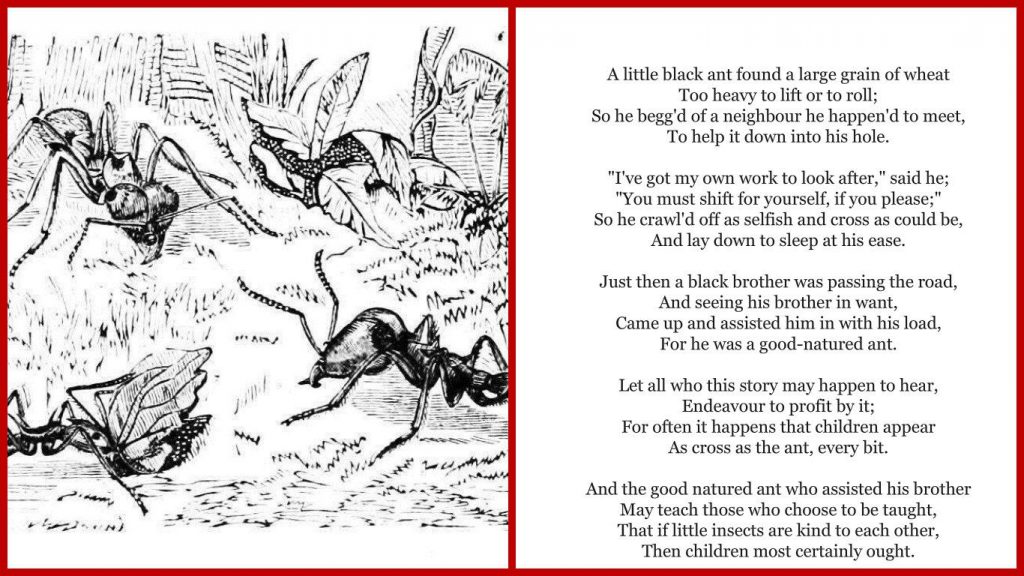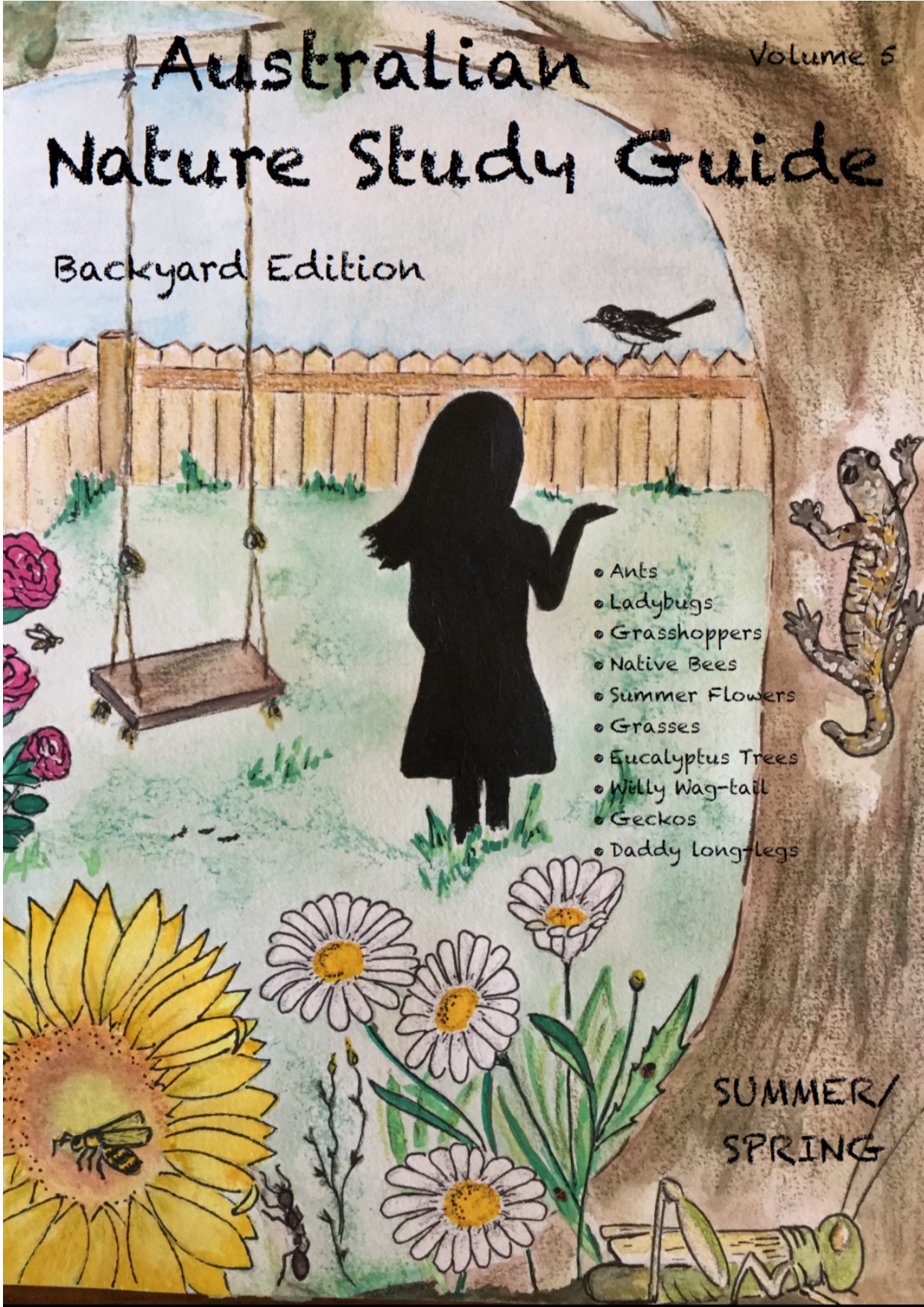The resources and links listed on this page will enhance your nature study lessons for the Backyard Nature Study Guide | Volume Five.
Book resources and links have been updated since this volume was published in 2019. Should you encounter an expired link, please let us know, and we’ll fix it.
Should you find a resource that will complement any lesson within the guide, be sure to contact us so that we can add it to the list.
We also welcome photographs of your nature study encounters and activities while using this resource. If you would like to share, please send photographs with a note about your experience or activity and I will add them to the Gallery to inspire other families on the same unit.
Table of Contents
NOTEBOOK PAGES FOR VOLUME FIVE ~ SUMMER/AUTUMN
Use the notebooking pages below to capture your nature adventures. Keep them in a file or paste them into a nature notebook or journal. There are two levels: Lower and Upper Primary.
Colouring Pages
These colouring pages have been designed to go along with the Nature Study Australia, Backyard Edition. Volume 5.
Fact Cards
Ants
The ant fauna of Australia is diverse with about 1300 recorded species. A few ant species to investigate are:
- Black Ants (Ochetellus glaber)
- Bulldog Ants (Myrmecia brevinoda)
- Sugar Ants (Camponotus consobrinus)
- Green Tree Ants (Oecaphylla smaraydina)
- Spider Ants (Leptomyrmex rufipes)
- Fire Ants (Solenopsis invicta)
- Spiny Ants (Polyrhachis sp.)
- Meat Ants (Iridomyrmex sp.)
- Honey Pot Ants (Formicidae)
Further Exploring
The Wonderland of Nature by Nuri Mass
- The Tiny World of Ants, pg. 28
- Insect Life by Arabella B. Buckley, What is an Insect, pg.1, Ants and Their Honey Cows, pg. 73
- All About Ants by Densey Clyne
- Ants Close Up by Andrew Kelly
- Ants by Sally Morgan
Related Internet Links
Ants | Kid CyberAnts | National Geographic
Literature Jaunt
One Hundred Hungry Ants by Elinor Pinczes | Read Aloud
The Story Book of Science by Jean Henri Fabre, pgs. 1-24
Our Wonderful World by Emery Lewis Howe
Little Busybodies by Jeanette Marks
The Ant and the Chrysalis by Aesops Fables | Read Aloud
The Trouble with Ants by Claudia Mills
Grant the Ant by Carol Blackburn and Libby Handy
Are You an Ant by Judy Allen
Little Black Ant on Park Street by Janet Halfmann
Hey Little Ant by Phillip M. Hoose Grant the Ant by Lindy Handy and Dan Holdaway
Poetry Picnic

Picture Study
Consider it’s ways
Watch as the Green Tree ants of Northern Australia diligently work with one another as they build a new nest.
Digging Deeper
Young Students:
- Learn more about ants by visiting with Jess at the Tree House here.
- Compare and discuss the difference between ant species and their nests. Watch how Army ants create a complex structure known as a bivouac using their own bodies to provide shelter for their queen here.
- Colour in the ant page provided with this guide. Discuss the things you notice.
- Create a clay model of an ant.
- Listen to the Ants go Marching One by One song here.
Older Students:
- Use a Venn diagram to compare the differences between ants and termites. Start here.
- Investigate how spiders mimic ants in order to trick them and eat their larva. Start here.
- Create a poster-board project of an ant colony.
- Design a formicarium or ant farm to observe ants building their tunnels. Here’s how and supplies can be obtained here. Capture flying queen ants to place in your ant farm at the beginning of the anting season.
- Draw and label an ants anatomy in your nature journal. Include notes on your observations from the nature walk.
- Use the ant notebook page to record your observations during your nature ramble in your backyard.
Oldest Students:
- Research and write a report on myrmecochory which is a symbiotic relationship between ants and plants.
Ladybeetles
A few lady beetle species to investigate are:
- Cardinal Ladybird (Rodolia cardinalis
- Fungus Eating Lady Beetle (Illeis galbula)
- Red Chilocorus (Chilocorus circumdatus)
Fuirther Exploring
The Wonderland of Nature by Nuri Mass
- Ladybird, Ladybird, Don’t Fly Away, pg. 10
Related Internet Links
- Ladybirds of Australia
- Australian Ladybirds
- Ladybird Insects | Brisbane Insects
- Ladybug Facts | National Geographic Kids
- Ladybirds | Backyard Buddies
Literature Jaunt
The Grouchy Ladybug by Eric Carle | Read Aloud
The Very Lazy Ladybug by Isobel Finn | Read Aloud
Poetry Picnic
Summer of the Ladybirds by Vivian Smith
Picture Study
Digging Deeper
Young Students:
- Watch the life cycle of a ladybird here.
- Visit the tree house to learn more about lady beetles here.
- Print lady beetle colouring pages here to paint.
- Make your own lady beetle. Here’s how.
- Sing along to this cute lady beetle song.
Older Students:
Create a rock painting of a lady beetle. Here’s how.
Oldest Students:
Paint a lady beetle in watercolour. Here’s how.
Grasshoppers
A few grasshopper species to investigate are:
- Green Vegetable Grasshopper (Atractomorpha similis)
- Hedge Grasshopper (Valonga irregularis)
- Australian Plague Locust (Chortoicetes terminifera)
- Liechardt’s Grasshopper (Petasida ephippigera)
Related Internet Links
- Grasshoppers | Nature Study Australia
- Order Orthoptera | Australian Museum
- Locust and Grasshopper Identification Guide
- Grasshoppers | Backyard Buddies
- Liechardt’s Grasshopper | Australian Geographic
- Liechardt’s Grasshopper | ABC Science
Literature Jaunt
- The Ant and the Grasshopper | An Aesop Fable
- Grasshoppers by Lisa Amstutz
- Little Busybodies by Jeanette Marks: The Little Army, pg. 21
- Are You a Grasshopper by Judy Allen
Poetry Picnic
Picture Study
Grasshopper Sculpture by Kamelia Sofronova
Digging Deeper
Young Students:
- Sing along to this ant and grasshopper tune.
Watch the grasshopper playing his song here. Make your own grasshopper tune by scraping a ruler over comb bristles.
Older Students:
- Learn to draw a grasshopper with this tutorial.
- Get up close to a feeding grasshopper by watching this.
Build a grasshopper with lego. Here’s some inspiration.
Oldest Students:
- Watch a locust plague devour everything in sight here.
- View this grasshopper dissection.
- Research the difference between grasshoppers that stridulate and those who crepitate.
- Read the story of Liechardt’s Grasshopper, and the German explorer who discovered it, and then disappeared in the Great Sandy Desert in 1845 here.
- Learn the kinematics of Grasshopper hops here.
